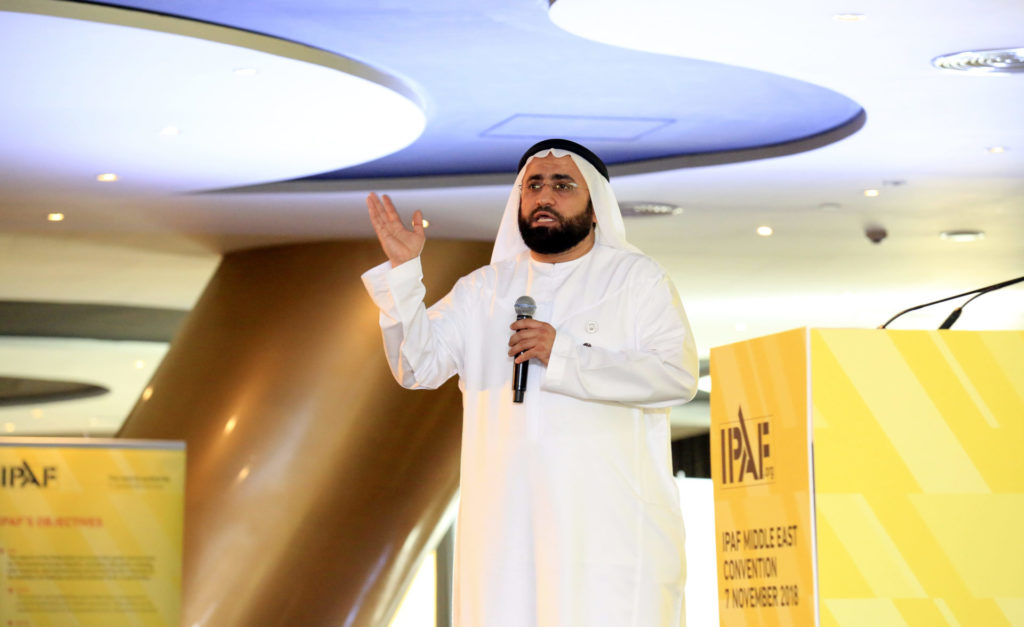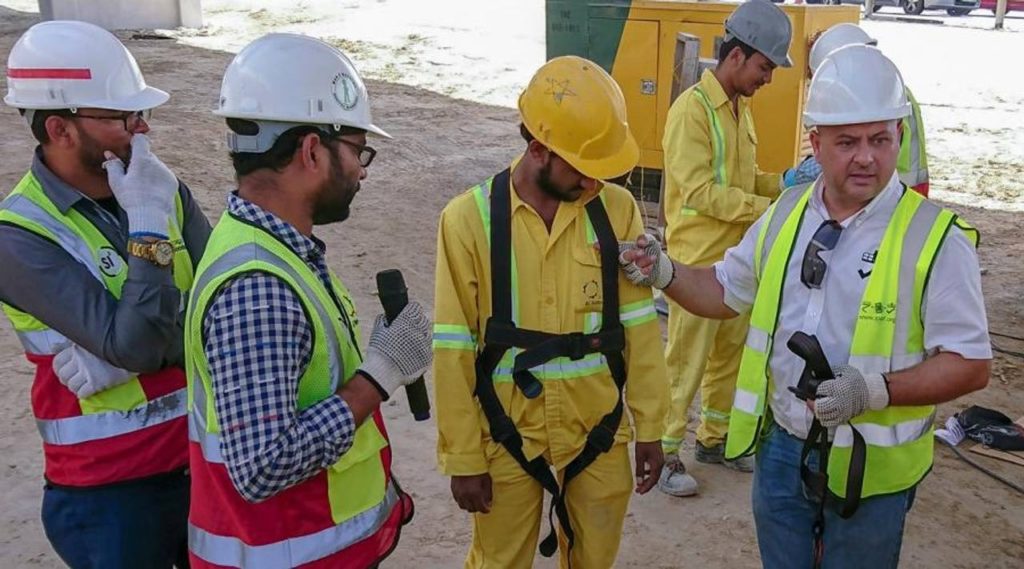Jason Woods joined the rental industry back in 1990. He started his career in the UK while working for a local company. 6 years later, he became one of IPAF’s instructor working for local companies throughout the Southwest of England. For the first time, he started to focus on powered access equipment. Although he always has been working on safety in the workforce, he got to master this topic while joining the organization. His relationship with IPAF has been on and off for years until he moved to the Middle East in 2010. Jason Woods quickly realized the massive opportunities for the organization and offered his services to the CEO. Nowadays, he is looking after the Middle East and Southeast Asia and Kazakhstan.
He agreed to tell us more about safety and cultural behaviors in this specific area.
According to you and on your regional scope (Middle East), what means “safe and effective use of powered access equipment “?
We must understand that powered accessed equipment was still very new in the Middle East back in early 2000. Even when I got there, it was still the case. It was perceived as a very ordinary piece of equipment, and there was no real guidance/awareness on how to use them. We acknowledged that operators needed to be trained and competent to use them, but we had no details on the training. It allowed people to interpret this terminology and make less of an effort when it came to the standardization of safety.
Back in the day, we relied on third-party providers who were traditionally machines inspectors of MEWP equipment. They will come onsite and do maintenance and spend between 20 minutes to 1-hour training operators on using the pieces of equipment they oversaw. It grew pretty strong in the early days.

Coming back to IPAF in 2010, due to the existing definition of competency and lack of standards, we would likely train around 180 students in twelve months for a fleet of 17 000 machines. So technically, we had very few licensed and trained people to use the equipment. As a result, we were at high risk for accidents. IPAF has allowed companies to do better and reduce those risks by positioning themselves and becoming a training reference.
Nowadays, IPAF is more solicited than those third-party training providers. For reference, IPAF trained 10 477 soon-to-be operators just last year in the Middle East, setting new standards for businesses which are driven by industry stakeholders. It should be noted that training here is more challenging than in western countries. It needs to be done in 4 (or more) different languages, so a course that usually takes one day in Europe will take 3 here.

Is there a local understanding of “safety” ? or there is no specific cultural behavior ?
I will say that based on what I observe within my scope, there’s a local understanding linked to economic development. As the countries develop themselves, safety standards will increase. We look at the national infrastructures and governmental entities, and depending on their size or wealth; they might not be able to continue to develop safety. Their resources are limited, although they are willing to do their best. Regardless of the country’s development stage, each employer is responsible for its employees’ safety by ensuring their competency when using the equipment.
The eternal problem we have with this terminology is that it is not standardized – so from one country to another and not only in the Middle East, it will vary and cause discrepancy. Overall, as the country grows, safety gets stronger. This is an ongoing process.
The UAE and Saudi Arabia are known for their safety standards, Qatar is a bit behind. It takes a bit more time for Oman and Kuwait to get there, but they will eventually. Local safety groups are doing their part working closely, supporting governments to take the next step. IIRSM and IOSH helped the UAE to be where they are by encouraging them to drive positive changes locally. As a result, the combined drive from IPAF and Dubai Municipality, a technical guide for the safe use of MEWP equipment was released back in 2019 (« GU67 Technical Guidance safe use of MEWP equipment »).
Is the maturity of the market correlated with the safety rules?
It goes together, yes. For many years and in several areas, we had practices that created risks while working at heights. The more Powered access equipment we had in the Middle East, the more standards we had and the stronger we got when it came to safety. However, I won’t say that the quantity or type of products we have should impact our safety standards. Still, it should definitely encourage contractors to enforce them and learn to redefine their risk assessment based on the job – which is still not systematic.
And what is your vision for the next 10 years? What would you expect in terms of MEWP safety?
In 10 years, I do believe we will continue to get stronger. We have seen how training has made a difference over the past 5 years and how stronger we got from a safety point of view. More equipment types will arrive, we will have bigger fleets following the demand and the evolution of the landscape. We have some fantastic and well-designed buildings in the Middle East; it gives us some challenges when working at heights with platforms, so I guess this will get better too. There’s some good perspective for new pieces of equipment coming in, including electrical ones. I can see the Middle East becoming the second region for IPAF safety– right behind the UK. We are the fastest-growing region, so I hope safety training will follow, which I am not concerned about. Training centers are already doing a terrific job.
